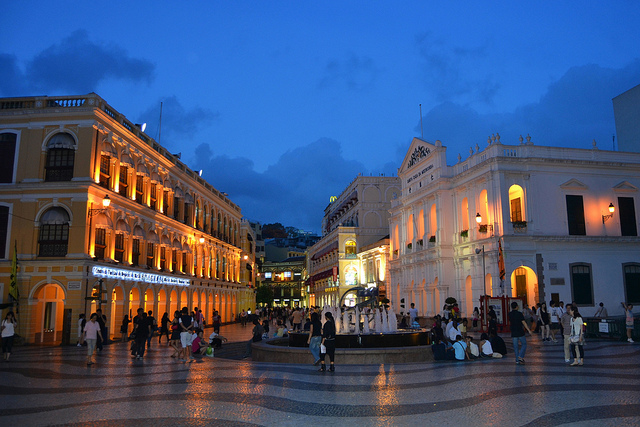No other festival in the world could claim to be more flamboyant, delectably riotous and over-the-top bacchanalian than the Rio Carnival of Brazil. Imagine not only hundreds, but thousands of barely-clad, tail-feathered samba dancers cavorting on and around equally lavish gigantic floats, and you get only half the picture. Throw in hundreds and hundreds of “blocos” and “bandas” or street parties and music events participated by massive crowds – and massive means an average of 10,000 people on a single block – sprinkled throughout Rio de Janeiro, and you still would come up short of a pictographic definition of what this carnival is really about.
If there ever is a pre-Lenten celebration that indulges – with cherry on top – all imaginable carnal pleasures before the mandatory abstinence after Fat Tuesday, Rio Carnival is it. (In fact, the Guinness Book of World Record considers Rio Carnival as the biggest of its kind.)
The major celebrations of Rio Carnival 2014 are going to be held on Sunday and Monday evenings after March 1 (this year’s carnival has just concluded last February 12).
Sizzling Samba Dancers With “A Lot To Show”
Rio de Janeiro is the samba capital of the world, having given birth to this type of dance right at the very Afro-Brazilian “favelas” of Rio more than a century ago. Samba, and the history behind it, is at the very core of the carnival from the end of the 19th century until today.
But what makes Rio Carnival a visual delight of epic proportions is the sheer number of samba dancers who twist and turn and gyrate in choreographed fashion around a float that represents a neighborhood samba school. Every over-the-top decorated float is escorted by no less than 4,000 samba dancers, all clad in colorful, exotic headdresses, tail feathers and for women, mile-high stilettos and practically nothing else.

Rhumba and merengue also make their beats heard over the cacophony of more than 4 million revelers (2013 census) who flow with the tide of humanity that Harlem Shakes in all directions. All these culminate in the 80,000-capacity Sambadrome, where the elaborate floats and frisky parades all come together for the ultimate showdown and final judgment.
Going Loco Over Blocos and Bandas
Dance is at the very heart of the Rio Carnival and it definitely is not celebrated in silence! The irresistible rhythms created by percussion instruments make singing, dancing and parading a multi-tasking necessity.
Band members usually start the street music parties by tuning their instruments in local meeting places, staying there for the duration, or moving about along a predetermined route. Revelers gather in steady streams at the first sounds of “batucada”, the dance music that accompanies samba, until legions of them colonize the entire neighborhood or street. A small party of merrymakers is called “blocos,” and a bigger one thousands of revelers strong is called “bandas.”
While the loudest and most riotous music parties can be found outside the “Sambadromo,” there are literally hundreds – 300 as of last count – of such parties happening simultaneously in Rio de Janeiro on the occasion of the carnival.
CosPlay and Drag
True to the spirit of overturning the moral order of the city before Ash Wednesday, the prevailing fashion of Rio Carnival is anything goes (if revelers dress up at all). The most popular, however, has been the wearing of costumes, swimwear, and of course, drag. Getting all dolled up – or none at all – is a moral imperative when a reveler finds himself or herself in Rio Carnival.
Origins of the Rio Carnival
It was the Portuguese who first had the idea of reversing the Brazilian social order in a merrymaking parade called “entrudo” which involved water and mud fights. After all, they came from Europe where the Venice Carnival (a similar, but masked, social-order-reversing festival) was starting to become highly popular, especially among the elite who wanted to escape the cultural constraints of being rich. When rich European migrants began settling Rio in mid-19th century, the festivities became more civil, celebrated with carnival balls, horse-drawn floats and street parades that featured the dance craze that swept Europe at the time, considered too conservative by the now Afro-Brazilians who have co-located (albeit in slums) with the rich in Rio.
Tasteful as the Rio Carnival celebrations may have been during this time, the working class that mainly consisted of Afro-Brazilians kicked up the dance steps a notch and made them “scandalous” with their suggestive moves and frisky jerks. Samba was born, and the street parties of Rio Carnival would become much wilder and grander in scale than their frontrunner cousins in Europe.

